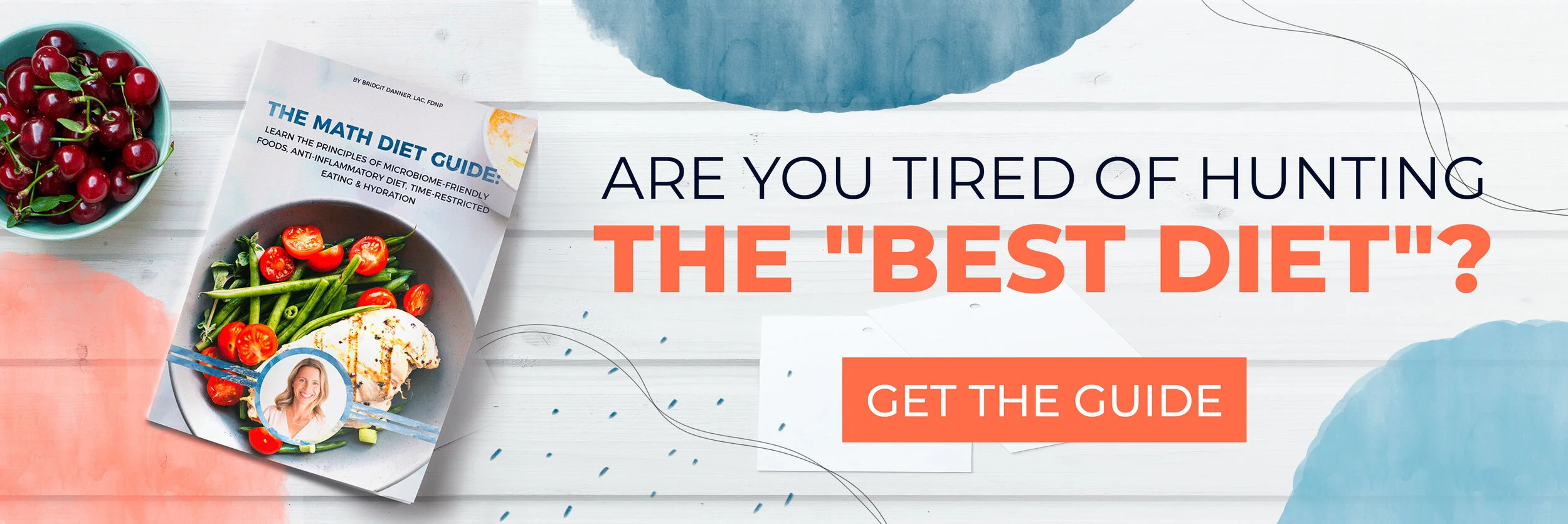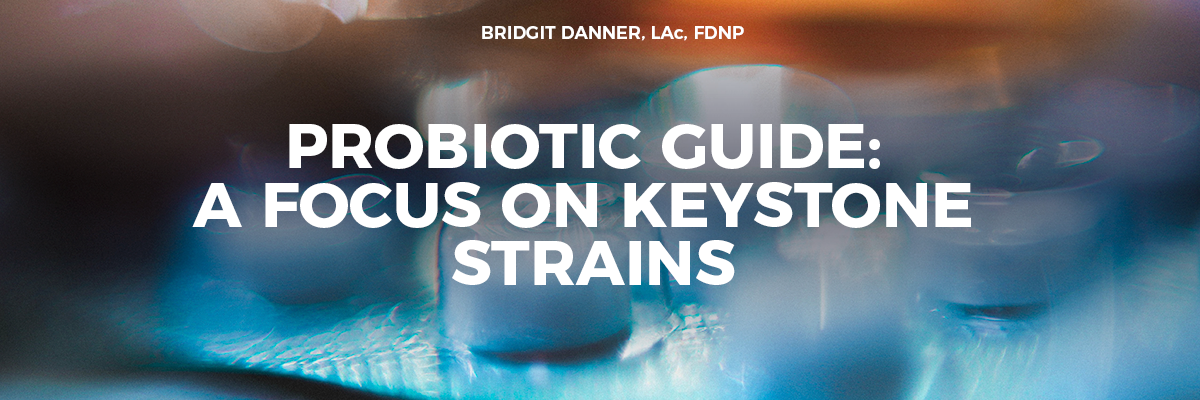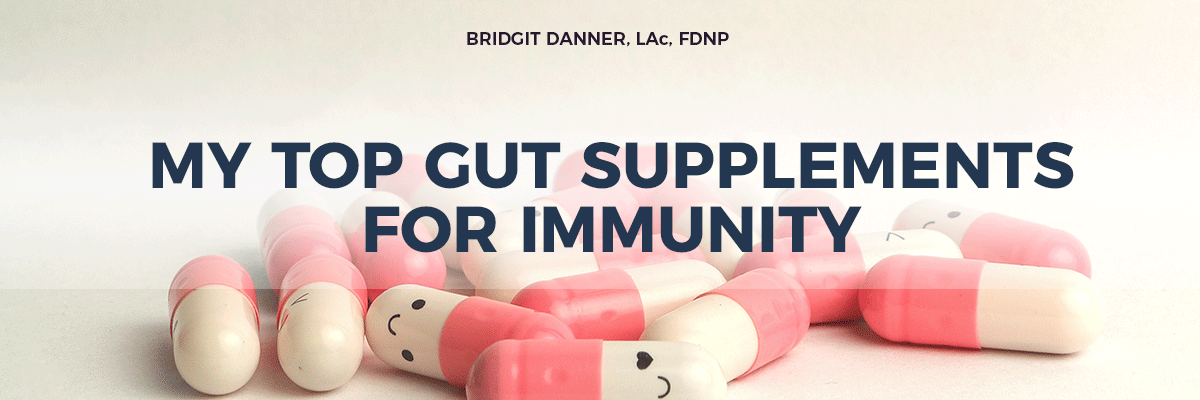What Should You Eat? Learn My Easy Anti-Inflammatory Diet
These days, diets and eating plans abound. Just attempting to figure out what you should eat and what you should avoid is enough to make your head spin!
Should you eat Paleo? Vegetarian? Or...?
I’ve spent years coaching clients through diet and lifestyle changes, and I’ve seen my fair share of diet plans. Unfortunately, many clients end up excluding most foods from their diets, but they often end up with nothing but a really restricted diet and continued poor digestion.
How do you find the best diet for you? Let me show you my baseline diet recommendations, and how to customize it for your needs!
Find the Best Diet for You
In my years of practice, I have found four key factors that make a good base diet. Of course, it likely will take some customization, depending on any specific digestive issues you may be facing. (See later in this article for customization ideas.)
I call this diet outline the MATH diet, which stands for:
Microbiome-friendly
Anti-inflammatory
Time-restricted
Hydrating
Microbiome-Friendly Diet
Unfortunately, our modern culture is eating fewer and fewer foods. We are getting lots of calories, but they are mainly from pizza, chicken, dessert items, pasta, rice, alcohol, sports drinks, and soda. (1)
Even if you try to eat healthfully, you may be in a rut because of habit or food sensitivity issues (see below). Or you may live in a place with poor access to healthy, fresh food.
Our ancestors, who foraged and hunted, got a wide variety of seasonal foods. They also didn’t use hand sanitizer or take antibiotics! They may not have lived as long, but they had better microbiomes.
Our standard westernized lifestyle has been associated with worse microbiomes and many accompanying issues, include obesity and other diseases. (1)
For your immune health, mental health, hormonal health and more, you want to increase the richness and diversity of bacterial species in your microbiome. This means eating a variety of whole foods as a first step!
Note: If you are not used to eating a variety of fibers, you may need to move slowly with the food portion of this advice, as your body may not yet have the right bacterial population to match those varieties of dietary fibers. Proceed, but slowly!
Microbiome-Friendly Foods:
Get a wide variety of fibers. Buy vegetables you don’t usually buy or like. Go the farmer’s market. Join a Community Supported Agriculture program. Eat some beans or lentils (unless on autoimmune paleo). Eat fermented foods (you just need a bit).
I loved Dr. Kharazzian’s idea for a high fiber shake: go buy a bunch of different vegetables, like 12 or 15, preferably organic. Clean and chop into chunks. Mix together and freeze. Pour some into a Vitamix or similar blender with water and anything you like, including canned coconut milk, almond milk, raw seeds, lemon, collagen powder or vanilla protein powder (but not whey because it inflames the brain).
Avoid all the inflammatory foods listed below as they feed the wrong bugs!
Microbiome-Friendly Exercise:
Exercise is good for the microbiome, as long as you don’t overdo it. If you overtrain, your body gets less diverse under the stress. It’s best to exercise around the same time each day.
Microbiome-Friendly Lifestyle:
Get outdoors.
Play with your dogs outside.
Pet a goat. Getting dirty is good for the microbiome.
Don’t smoke.
Avoid inhaling exhaust.
Avoid BPA-lined cans and travel cups (the ‘paper’ ones from coffee shops).
Sleep at the same hours each day.
Have healthy relationships.
Anti-Inflammatory Diet
Foods to avoid that cause inflammation include:
Dairy (all mammal dairy)
Sugar
Wheat
Alcohol
Factory-farmed meats
Processed fats like canola oil or margarine
Does this mean you will never, ever eat these things? No, but you don’t need them and they feed the fire of inflammation in your body that is behind most diseases. If you are dealing with an inflamed brain or an autoimmune disease, you likely will do best to avoid them.
You can also think about adding anti-inflammatory foods and spices to your menu. These are numerous, so I’ll just cite a handful:
Garlic
Turmeric
Walnuts
Blueberries
Ginger
Wild salmon
Broccoli
Brussels sprouts
Kale
Cherries
Extra virgin olive oil
Time-Restricted Eating
People are more familiar with the term ‘intermittent fasting,’ but there is a related practice called time-restricted eating that I think is important because it takes the emphasis off fasting.
As you learn to eat less often, longer fasts may become accessible to you. But what I want to emphasize is not snacking, and paying attention to when you eat.
The body has times it does things best. Simply changing when you eat and how often can improve your microbiome.
The basics for me are to eat a maximum of three times within 12 hours. If you are a hypoglycemic snacker or a night owl, it may be harder than you think! Just work up to it slowly.
Once you reach that goal, you can experiment with eating two big, healthy meals, or eating three times with 8-10 hours, etc.
Hydrate
Thirty minutes before and thirty to sixty minutes after eating, drink 4 oz. of water within every 15 minute time period.
Customizing Your Best Diet
While the guidelines above are a good start, if you are dealing with issues such as SIBO, sensitive stomach lining, bloating, leaky gut, etc., you will want to give your body more customized support.
Download my full report on the MATH diet below. It will give you a copy of the information included above, as well as extra customization options and guidelines.
Bridgit Danner, LAc, FDNP, is trained in functional health coaching and has worked with thousands of women over her career since 2004. She is the founder of Women’s Wellness Collaborative llc and HormoneDetoxShop.com.











Ever feel gassy, bloated, or ‘stopped up’? I feel your pain, my friend – I’ve been there! The good news is, you’re not cursed to live a gassy life forever. With a few tweaks to your diet, you can get your digestive system humming along and say buy-bye to chronic bloating. I experienced this myself by trying the low FODMAP diet.